Alfa Laval Making Headway on Methanol Solutions

Seen as a next step toward the maritime industry’s decarbonization goals, Methanol—if produced from renewable green sources—will bring the industry to a level of carbon neutrality. At Alfa Laval, the technologies to enable that step are being developed.As a low-flashpoint fuel, methanol poses significant challenges that require a new approach to fuel supply. Alfa Laval is partnering with MAN Energy Solutions to develop a low-flashpoint supply system (LFSS) for ME-LGIM two-stroke engines.
WSS: Post-combustion Fuel Treatment Cuts Vessel Costs, Risk
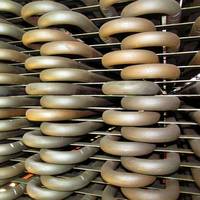
Wilhelmsen Ships Service, a provider of products and services to the shipping industry, is advising vessel operators to wage war on soot. According to WSS, soot accumulation in a ship’s exhaust gas boiler (EGB) is a serious issue, leading to reduced EGB efficiency, significant cleaning costs, corrosion, and the risk of soot fires. However, a simple post-combustion fuel treatment can solve all these problems, at negligible cost. Refined heavy marine fuels are full of contaminants, such as Vanadium, Sodium, Aluminium, Silica, and Potassium, which leave deposits when burnt.
Alfa Laval EGR-HPE Economizer a Boon
With Tier III NOx limits entering into force in North America and the US Caribbean in January 2016, the time has come for many ship owners to choose their method of compliance. Exhaust Gas Recirculation (EGR) on MAN B&W engines has strong advantages on its own. But combined with a new pressurized EGR economizer from Alfa Laval, it also offers the potential for massive fuel savings. “EGR provides Tier III NOx compliance with a very compact footprint, but compliance itself is only part of the full potential,” says John Pedersen, Business Manager, Boilers, Combustion & Heaters at Alfa Laval. “Working closely with MAN Diesel & Turbo to optimize the EGR technology, we saw additional opportunities through our expertise in marine boilers.
Pressurized EGR Boiler Ready For Testing
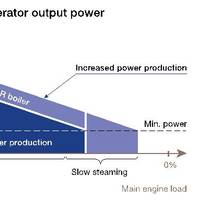
Exhaust Gas Recirculation (EGR) has firmly shown its ability to comply with Tier III NOx limits, which will enter into force in January 2016. Developed by MAN Diesel & Turbo, the EGR process already relies on Alfa Laval’s PureNOx, which provides the vital cleaning of the scrubber water. Now Alfa Laval is cooperating with MAN Diesel & Turbo to implement an EGR boiler, which could potentially add major energy benefits to the secure emission compliance. Over 1000 hours of EGR operation have now been achieved aboard the Maersk Cardiff, a container newbuild from A.P.
Alfa Laval: Green & Efficient Shipping

When Gustaf de Laval read in 1877 an article in the German periodical ”Milchzeitung” (Milk News Paper) about centrifugal separators, he certainly did not expect that it would lead to his founding of a global acting company with around 16,400 employees nearly 140 years later. His first continuous separator, with a capacity of 130 liters per hour, was demonstrated 1879 in Stockholm; and four years later, in 1883, he and his partner, Oscar Lamm, established the company AB Separator.
LNG is a Crystal Clear Alternative
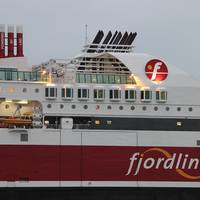
Norway-based shipping company Fjord Line’s Stavangerfjord represents a new-generation of advanced and environmentally friendly Cruise Passenger Ferry with outstanding passenger facilities in order to operate both as a day and night ferry. The vessel is built to provide passengers with pleasant experiences, even under the harsh weather conditions of the North Sea. A modern and flexible interior design provides a capacity for 1,500 passengers (1,200 passenger during winter), and a total of 306 cabins on two decks provide first class accommodation and a variety of restaurants…
Alfa Laval Opens Test & Training Center
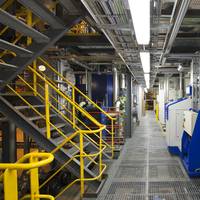
After months of preparation, the doors of the Alfa Laval Test & Training Center in Aalborg, Denmark are open. Located on the site of the former Aalborg shipyard, this massive ship simulation facility – the largest and most advanced in the marine industry – now adds considerable muscle to Alfa Laval’s research and development efforts. The Alfa Laval Test & Training Center comprises a 250 m2 testing area, built around a 2 MW marine engine and comprising commercial and prototype equipment from all of Alfa Laval’s marine product groups.
Alfa Laval Opens Test & Training Center
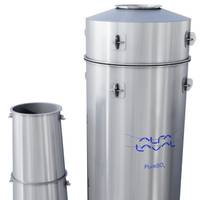
Marine R&D enters a bold new era as operations begin at the Alfa Laval Test & Training Center. After months of intense preparation, the doors of the Alfa Laval Test & Training Center in Aalborg, Denmark are open. Located on the site of the former Aalborg shipyard, this massive ship simulation facility – the largest and most advanced in the marine industry – now adds considerable muscle to Alfa Laval’s research and development efforts. The Alfa Laval Test & Training Center comprises a 250 m2 testing area…
Pull the Handle Down...
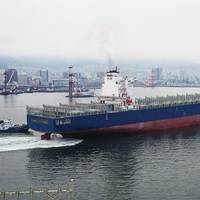
One of the most effective and easiest fuel reduction operations is reducing the engine power by reducing the speed of a vessel. Out of the total operational costs of a vessel, fuel costs account for, by far, the highest proportion. When fuel prices soared, the technical experts of one of the world’s biggest shipping companies set about to solve the problem, and slowing down was the solution they devised. By 2009 significant fuel savings resulted from sailing its ships at 12 knots instead of 24, and ”Slow Steaming” officially became the standard operating procedure in their fleet.
Slide Fuel-Valves Pass Noteworthy Milestone
First introduced at the turn of the millennium, MAN PrimeServ – MAN Diesel & Turbo’s service division – recently retrofitted its 20,000th slide fuel-valve. Slide fuel-valves come as standard on all new MAN B&W engines but can also be retrofitted on MC engines. The slide fuel-valve eliminates the so-called "sac volume," which reduces fuel-oil consumption and, furthermore, eliminates dripping from the fuel-valve nozzle. Compared to conventional valves, the slide fuel-valve has NOx-reduction potential. According to MAN, the reduced sac volume leads to an improved combustion process, resulting in fewer deposits throughout the gas ways and a reduction in overall emissions, such as HC, NOx and particulate matter.
Slide Fuel-Valve a MAN Success Story

First introduced at the turn of the millennium, MAN PrimeServ – MAN Diesel & Turbo’s service division – recently retrofitted its 20,000th slide fuel-valve. Christian Ludwig – Head of Retrofit & Upgrade – MAN Diesel & Turbo, said: “Slide fuel-valves have proved to be very popular within the marine, two-stroke market. Really, it’s a case of having introduced the right technology at the right time and the slide fuel-valve’s strong market performance is testimony to the fuel savings and increased environmental profile it brings to working vessels.
Parat to Retrofit Boiler Aboard Polar Qaasiut
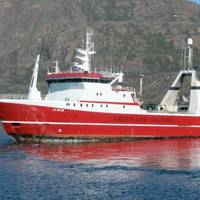
Parat Halvorsen AS was assigned a contract to deliver a retrofit steam boiler to Polar Seafood Greenland and one of their trawlers, the M/Tr. Polar Qaasiut. The boiler is a combined oil-fired and exhaust gas boiler, type MCS, to comply steam production for the trawlers fishmeal and fish factory. The retrofit boiler will be tailor made, adapted the vessels engine room and engine, to gain optimal steam production for the vessels factory. www.parat.no
Making Flare Gas Useful
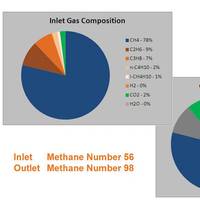
Wärtsilä has developed the GasReformer, a product which converts associated gas, which is often flared, into usable fuel for its dual-fuel engines. When producing oil, associated gas is also released from the deposits. In many places this gas is commonly burnt off in gas flares, a waste of energy and a pollutant of the atmosphere. In addition to useful methane, this gas consists of heavier hydrocarbons including ethane, propane and butane. The composition of the gas typically also vary during the production phase of the oil field.
MAIB Issues Report on QE2 Casualty
The UK Marine Accident Investigation Branch (MAIB) released its report on the investigation of the escape of steam and hot water on board the Queen Elizabeth 2
EMMF: Getting Heavy With Bunkers
Higher viscosity bunker fuels do not automatically contain more harmful elements than lighter ones, according to ExxonMobil Marine Fuels (EMMF), which has recently been supplying 500 centiStokes fuel in response to customer demand. Emphasizing that quality and safety must be prime considerations with all fuel supplied, irrespective of viscosity, EMMF says the two crucial prerequisites for using 500 cSt fuel are the ability to heat it to a sufficiently high temperature to inject it into the vessels' engines, and the provision of purification equipment able to deal with the higher specific gravity of the product. The fuel must be maintained above its minimum pumping viscosity while in storage awaiting use.





